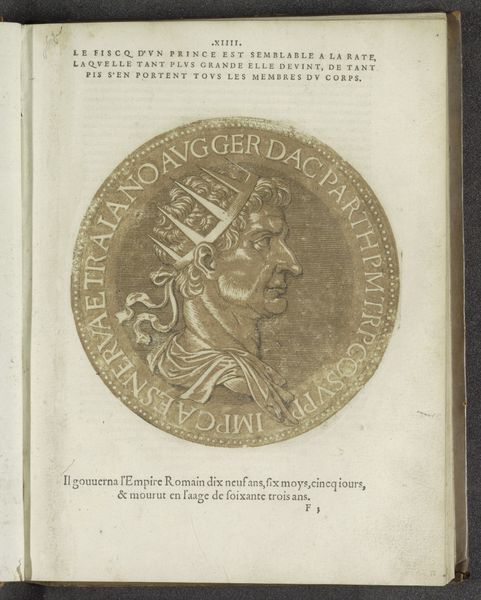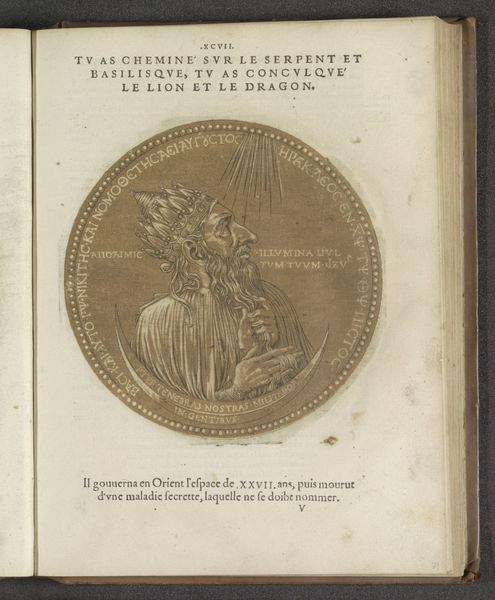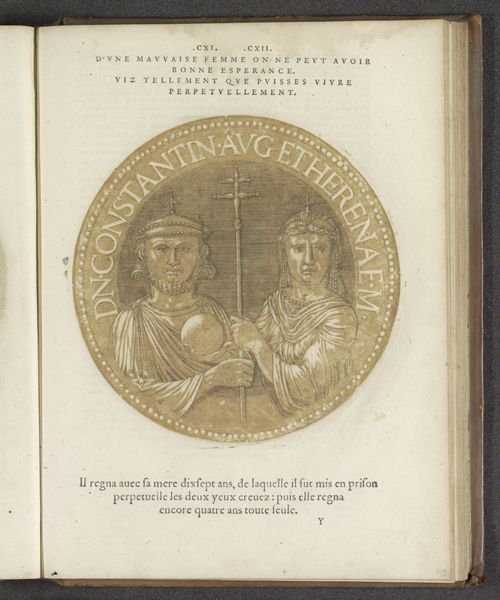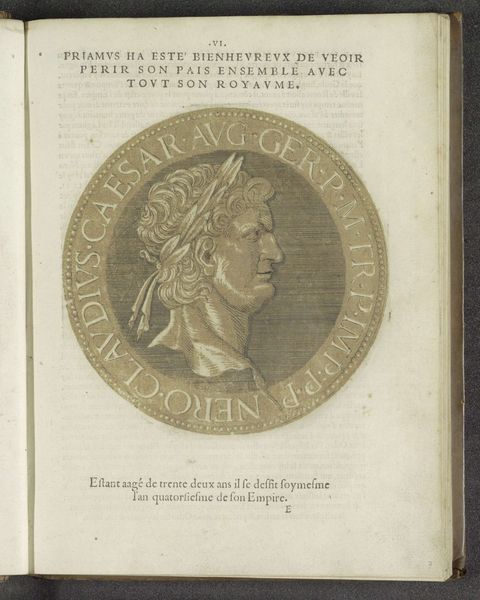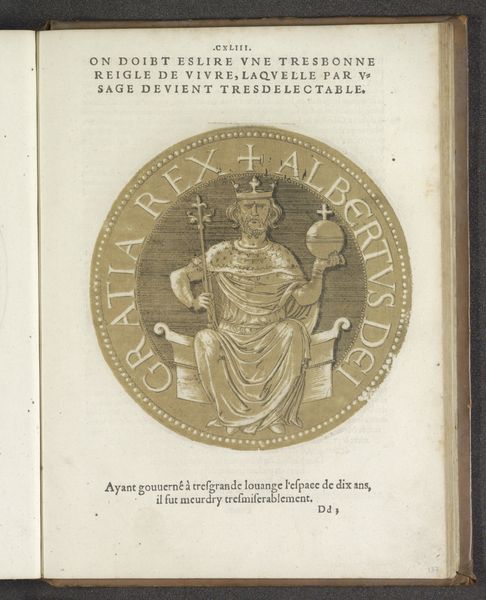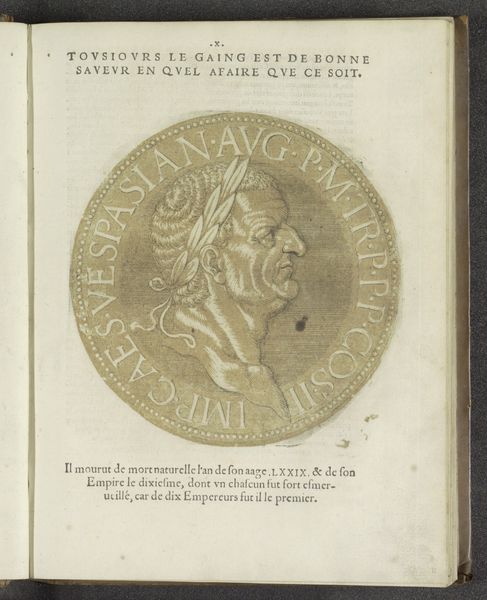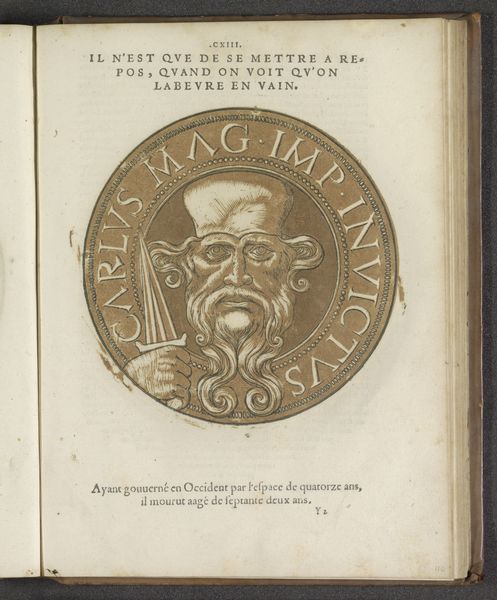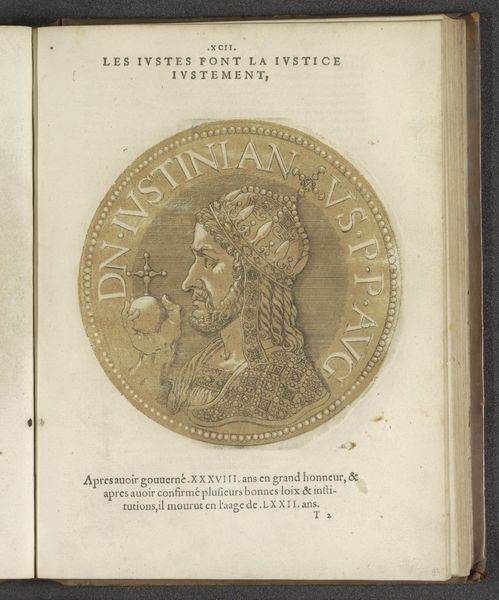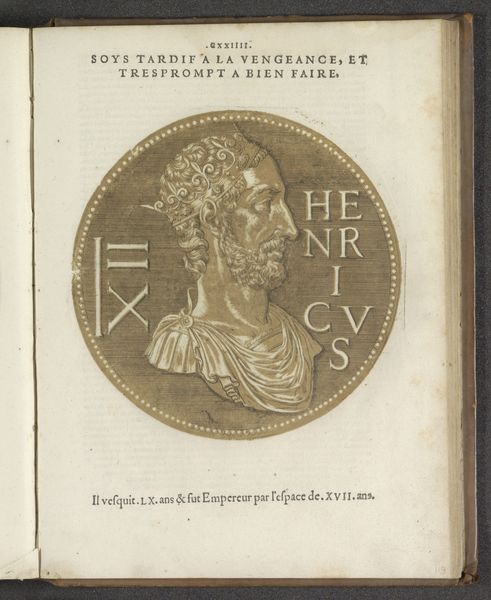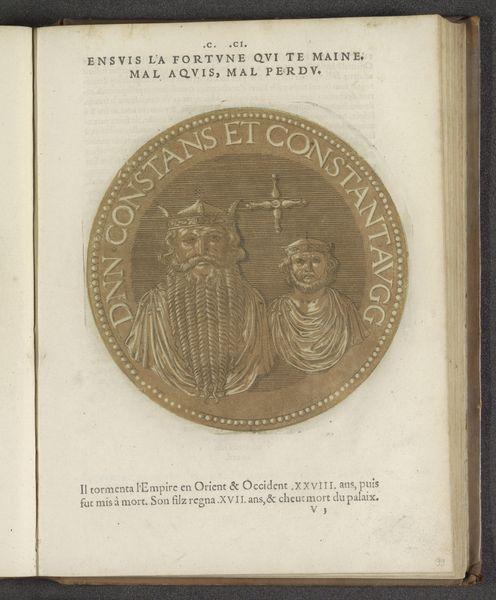
print, paper, engraving
#
portrait
# print
#
paper
#
coloured pencil
#
ancient-mediterranean
#
engraving
Dimensions: height 181 mm, width 180 mm
Copyright: Rijks Museum: Open Domain
Editor: Here we have Joos Gietleughen’s “Portret van keizer Tacitus,” dating from around 1557 to 1559. It’s a print on paper, an engraving. I’m struck by how it mimics the appearance of an ancient coin or medal, it is heavy with imagery! What symbols do you find particularly revealing in this portrait? Curator: The coin format is significant itself, isn't it? The act of rendering the emperor's likeness as currency elevates Tacitus to a symbol of enduring power and value, almost beyond his historical context. Even the inscription itself can be decoded – consider its possible connotations – who is telling us about what this person "is". The helmet, almost like sun rays? What purpose could these have? Editor: I didn’t think of the format itself as symbolic, I was too focused on the shield! Maybe those “sun rays” aren’t trying to glorify him. Perhaps it shows the armor or weaponry that represents war? Curator: Precisely! It might signify the attributes they wanted associated with his rule: military strength and, by extension, protection of the realm. Symbols always carry multiple layers, it’s our role to decode them, informed by our understanding of the time period but also considering interpretations over time. Look at how it’s placed within a book. Consider where knowledge and leadership connect… Editor: That's a fascinating point. By including Tacitus in a book, doesn't it suggest the Renaissance's deep engagement with and perhaps even idealization of the classical past? I suppose I’m more used to portraiture in painting, not a portrait on a coin *within* a book. Curator: Exactly! This format emphasizes cultural memory, creating a continuity between the ancient world and the Renaissance. It reminds us how each era uses and reinterprets symbols from the past to shape its own identity. Editor: I learned that there's often more to the imagery and format than meets the eye. Thanks! Curator: And that symbols accrue meanings with the passing of time!
Comments
No comments
Be the first to comment and join the conversation on the ultimate creative platform.

